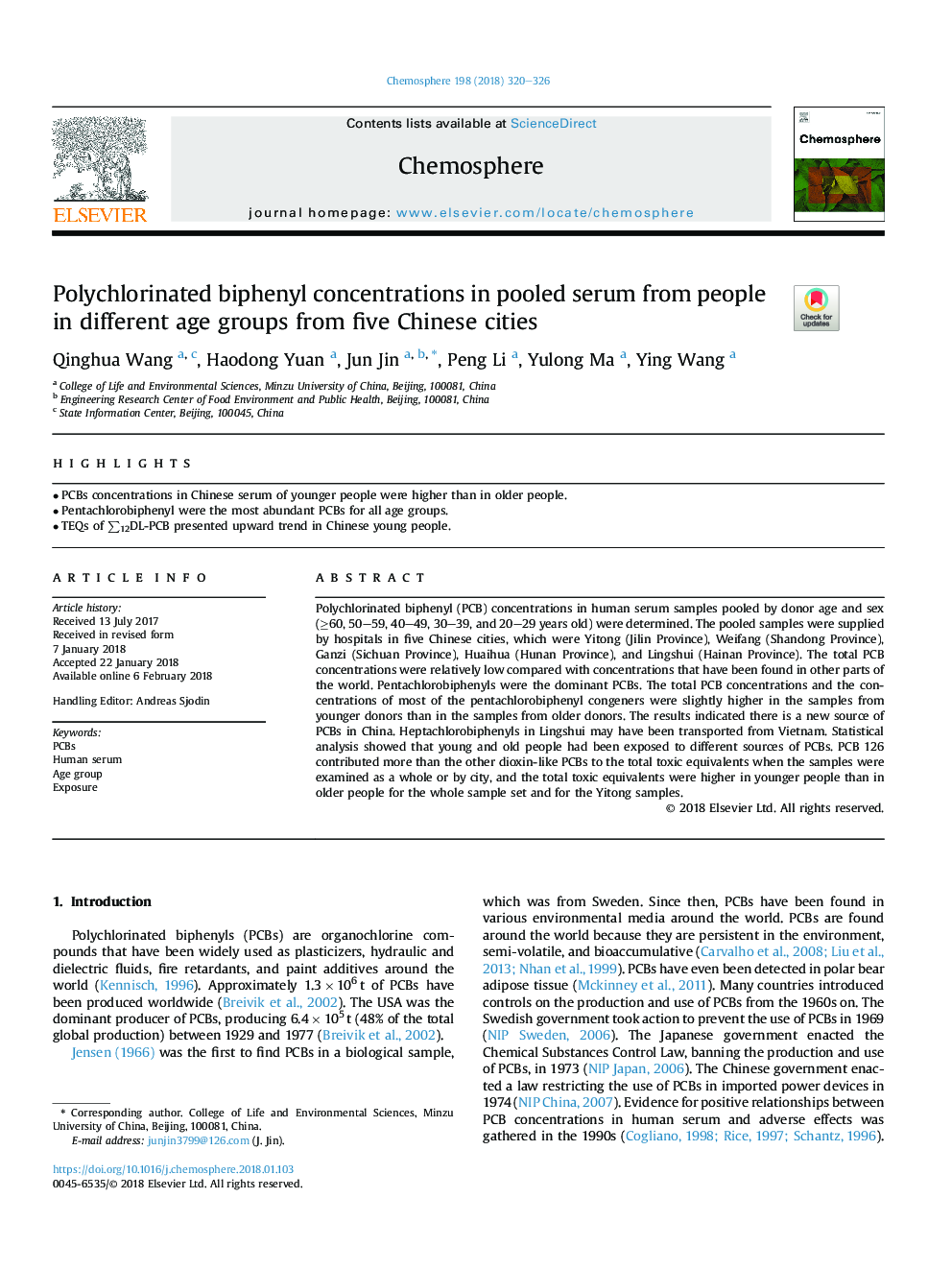| Article ID | Journal | Published Year | Pages | File Type |
|---|---|---|---|---|
| 8851877 | Chemosphere | 2018 | 7 Pages |
Abstract
Polychlorinated biphenyl (PCB) concentrations in human serum samples pooled by donor age and sex (â¥60, 50-59, 40-49, 30-39, and 20-29 years old) were determined. The pooled samples were supplied by hospitals in five Chinese cities, which were Yitong (Jilin Province), Weifang (Shandong Province), Ganzi (Sichuan Province), Huaihua (Hunan Province), and Lingshui (Hainan Province). The total PCB concentrations were relatively low compared with concentrations that have been found in other parts of the world. Pentachlorobiphenyls were the dominant PCBs. The total PCB concentrations and the concentrations of most of the pentachlorobiphenyl congeners were slightly higher in the samples from younger donors than in the samples from older donors. The results indicated there is a new source of PCBs in China. Heptachlorobiphenyls in Lingshui may have been transported from Vietnam. Statistical analysis showed that young and old people had been exposed to different sources of PCBs. PCB 126 contributed more than the other dioxin-like PCBs to the total toxic equivalents when the samples were examined as a whole or by city, and the total toxic equivalents were higher in younger people than in older people for the whole sample set and for the Yitong samples.
Keywords
Related Topics
Life Sciences
Environmental Science
Environmental Chemistry
Authors
Qinghua Wang, Haodong Yuan, Jun Jin, Peng Li, Yulong Ma, Ying Wang,
